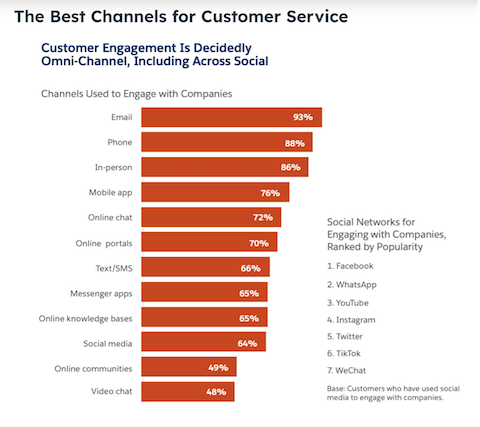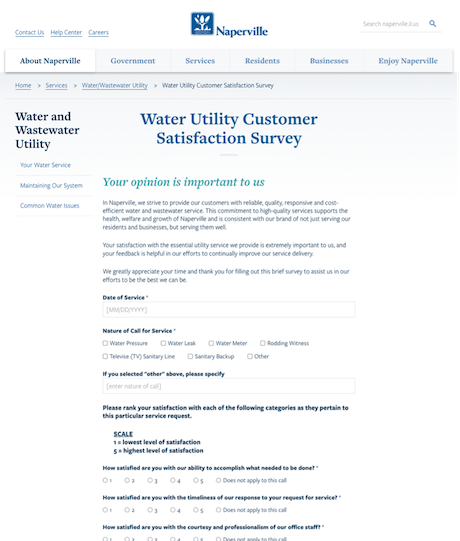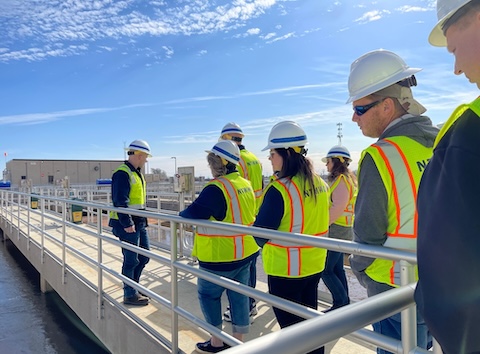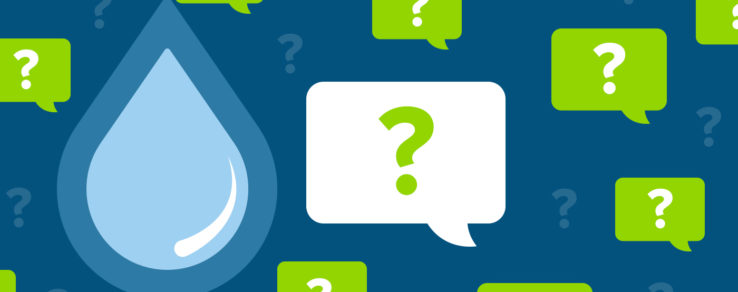Behind the simple act of turning on a tap lies a complex system of infrastructure and services provided by water utilities — systems that customers may not always understand. From concerns about water quality to inquiries about service interruptions, customers seek clarity and reliability from their utility providers.
To ensure clear communications and effectively build long-lasting customer relationships, understanding their concerns and answering their questions is key. However, engaging with customers is no longer just about responding to their inquiries. Instead, it’s a matter of being proactive — anticipating water utility customer needs and providing timely, relevant information.
Transparency is paramount, with customers expecting clear communication about water quality reports, maintenance schedules, disruptions to service and more. By leveraging innovative communication channels, water utilities can forge stronger connections with customers and enhance their overall experience.
“With monthly rates continuing to rise and the water supply running dangerously low in many parts of the country, there has never been a more critical time for water utilities to proactively communicate with their customers about what they are doing to protect our drinking water today and into the future,” Andrew Heath, Senior Director of Utilities Intelligence at J.D. Power, explained in a press release.
The J.D. Power 2023 U.S. Water Utility Residential Customer Satisfaction Study found a direct correlation between communications and customer satisfaction. The study showed that a 7-point increase in customer communications and a 6-point increase in customer service drove increased levels of customer satisfaction across the board.
“The communications factor continues to show improvement across each wave of the study, suggesting that utilities are proactively reaching out to customers throughout the year to provide updates on pricing, safety and supply issues,” according to the report.
Get to Know Your Water Utility’s Customer Needs
Every interaction with a customer is an opportunity to learn and improve. Water utilities must recognize the diversity of concerns that customers may have. From questions about water quality and conservation tips to inquiries about billing discrepancies or service interruptions, being attentive to these concerns is crucial.
To begin addressing these concerns, your utility should first focus on identifying common customer inquiries, including knowing customers’ usual consumption patterns, common complaints, preferences, and their general attitude toward water conservation. By understanding your customers better, you can start to anticipate their needs and proactively address their questions.
After all, your utility may provide a needed service, but the way you approach communicating to water customers speaks dividends. Salesforce research shows that 88% of customers say the experience a company provides is as important as its product or services.
Effective Strategies for Customer Communications
Effective communication is crucial in addressing your water utility customers’ needs. This starts with establishing clear communication channels where customers can reach out with questions or concerns. This doesn’t just mean responding to their queries in a timely manner, but also being able to clarify complex water-related topics. For example, if there’s a change in water rates or a new policy on water usage, it’s your utility’s responsibility to communicate these changes to your customers.
Traditional communication methods like call centers are extremely valuable. Training customer service representatives to handle inquiries efficiently and providing educational resources can empower them to address common questions. However, it’s also essential to create digital experiences for water customers through email, newsletters, mobile apps, social media and your utility website.
According to the J.D. Power 2024 U.S. Utility Digital Experience Study, customer satisfaction with utility websites and apps lag behind other industries, achieving only a 594 rating on a 1,000-point scale. This is compared to other industry scores, including:
- 718 for wealth management
- 702 for property and casualty insurance
- 685 for retirement plans
“Digital is the first stop for utility customers when they experience a problem or need more information related to billing or special programs, but more often than not, their digital inquiries are leading to dead ends and phone calls to customer service,” Jon Sundberg, Director of Digital Solutions at J.D. Power, explained in a press release. “The static, reactive approach to digital being taken by utilities is falling far short of current customer expectations.”
Given the preference for digital communication among customers, it may be time to put effort and resources into developing or updating your utility’s mobile app or ensuring your utility’s website offers a seamless user experience.

Additionally, personalization goes hand-in-hand with digital experiences and communications. Research shows that 59% of customers already believe businesses should personalize their experiences based on the data they collect about them. Further, the J.D. Power Utility Digital Experience study showed that only 54% of utility customers say they have received personalized information regarding their energy or water consumption, despite 49% of customers indicating that they would find this helpful.
Knowing these preferences, utility personalized video offers an easy and appealing way for water providers to engage with customers. Personalized videos leverage customer data, such as usage, program participation and content interests, to create unique, relevant videos for each individual. It’s no surprise that data shows that using personalized calls-to-actions (CTAs) result in 202% more conversions than those without.
4 Key Factors to Meeting Water Utility Customer Needs
In addition to developing strong digital communications, there are other key factors to remember when addressing your water utility’s customer needs.
1. Enact Transparency
Customers appreciate when they are kept in the loop about issues that impact their water service. Whether it’s an unexpected disruption in water supply, a planned maintenance activity or a change in billing procedures, ensure that you communicate these developments to your customers as early as possible.
Notifying customers in advance demonstrates respect for their time and helps manage expectations. Similarly, continue to update customers throughout the process to keep them in the loop. Transparent communications build trust, and trust leads to customer loyalty.
Additionally, implement systems to notify customers in advance of planned maintenance, service interruptions or emergencies. These notifications can be sent through automated phone calls, text messages and/or email alerts, and will continue to act as transparent forms of communication.
2. Implement Feedback Loops
Providing avenues for customers to voice their concerns is one of the most impactful things your utility can do to make sure customers feel heard and valued. Consider conducting surveys, providing feedback forms or holding interviews to gather insights about your customers and their experiences. These methods can provide valuable insights into water utility customer needs and help tailor future communication strategies.
For example, the City of Naperville, Illinois, hosts a water utility customer satisfaction survey on their site that customers can fill out. The survey covers the date of service, what service occurred and satisfaction questions about the experience. Customers can provide their name, address and phone number to be further connected to the utility if there are additional concerns that could not be explained in the survey. The utility uses this customer feedback to guide its service delivery.

3. Educate and Engage the Community
Provide educational materials and resources to help customers understand their water service, conservation practices, billing processes, and any other relevant information. Don’t discount both physical and digital methods of outreach: Send direct mail postcards, host community events, post on social media and keep your website updated.
Additionally, engage with the community through public meetings, events or outreach programs to address concerns, gather feedback and build customer relationships. Keep customers informed about any changes or developments related to their water service.
For example, North Texas Municipal Water District hosts quarterly tours of its water treatment plants. In the first quarter of 2023, the tour was dedicated to elected officials and staff of their member cities and customers. They received an overview of the district, as well as information on history, service areas, water conservation, outreach initiatives and ongoing major projects, then toured the plant complex to see operations in action.

4. Consider Your Diverse Customer Base
Recognize and accommodate your utility’s diverse customers, understanding that inclusivity is paramount in effective communication. This may mean offering customer support in multiple languages, ensuring that language barriers do not hinder access to essential services.
Accessibility considerations extend beyond language. Utilities should make their communication channels and materials accessible to customers with disabilities, providing options such as Braille, large print or audio formats.
By embracing inclusivity and accessibility, utilities can effectively engage with all customers, fostering a sense of trust and belonging within the community. This commitment to diversity not only enhances customer satisfaction but also strengthens the utility’s reputation as a provider that prioritizes the needs of all its customers.
Meeting Water Utility Needs with Customer-Centric Communications
Effectively addressing your water utility’s customers’ needs requires a multifaceted approach that prioritizes proactive communication, transparency and customer engagement. By understanding your customers’ concerns and implementing effective communication strategies, your water utility can build trust, grow satisfaction and ultimately provide the high-quality service that customers expect.
When you focus on understanding where customers are coming from, and creating experiences that help make their lives easier, your water utility is proving its dedication to its customers and providing real value.

